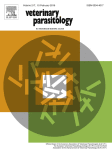Ver ítem
- xmlui.general.dspace_homeCentros Regionales y EEAsCentro Regional Patagonia NorteEEA BarilocheArtículos científicosxmlui.ArtifactBrowser.ItemViewer.trail
- Inicio
- Centros Regionales y EEAs
- Centro Regional Patagonia Norte
- EEA Bariloche
- Artículos científicos
- Ver ítem
Resistance of Fasciola hepatica against triclabendazole in cattle in Patagonia (Argentina)
Resumen
Triclabendazol (TCBZ) es el fármaco más utilizado para el control de la fasciolosis en rumiantes. Es muy eficaz contra los estadios inmaduros y adultos de Fasciola spp. y frecuentes tratamientos dentro del período prepatente puede reducir la infección uke fl a un nivel
[ver mas...]
Triclabendazol (TCBZ) es el fármaco más utilizado para el control de la fasciolosis en rumiantes. Es muy eficaz contra los estadios inmaduros y adultos de Fasciola spp. y frecuentes tratamientos dentro del período prepatente puede reducir la infección uke fl a un nivel insignificante.
[Cerrar]
In the winter of 2008, cattle on a farm in the province of Neuquen, Argentina died from subacute and chronic liver fluke disease despite four previous treatments with Triclabendazole (TCBZ). In the spring of 2009, a preliminary efficacy test revealed good performance using nitroxynil, whereas TCBZ efficacy was only 18% by egg counts of Fasciola eggs in the faeces. Resistance to Fasciola hepatica to TCBZ has never been reported in South America, so in
[ver mas...]
In the winter of 2008, cattle on a farm in the province of Neuquen, Argentina died from subacute and chronic liver fluke disease despite four previous treatments with Triclabendazole (TCBZ). In the spring of 2009, a preliminary efficacy test revealed good performance using nitroxynil, whereas TCBZ efficacy was only 18% by egg counts of Fasciola eggs in the faeces. Resistance to Fasciola hepatica to TCBZ has never been reported in South America, so in January of 2010 a controlled trial was conducted to confirm and to define the degree of resistance in this herd. In a clinical trial, the fluke egg output was monitored on Days 14 and 21 and serum enzymes gamma-glutamyl transpeptidase (GGT) and glutamic-oxaloacetic transaminase (GOT) on Days 0 and 21 in 36 calves treated with TCBZ or with closantel. The results showed a reduction of 100% in fluke egg output at Days 14 and 21 for closantel. The mean epg in the TCBZ-treated groups did not decrease. Because of the fact that in this study TCBZ treatment in cattle had no effect, even at double the recommended dose, it is highly indicative that resistance of F. hepatica against TCBZ is present on this farm. The GGT and GOT levels decreased in the closantel-treated group as a result of the treatment at 21 days after dosing. To evaluate the importance of TCBZ resistance in F. hepatica in Argentina, a study on more farms from endemic areas is needed.
[Cerrar]

Autor
Fuente
Veterinary parasitology 178 (3–4) : 364-366. (June 2011)
Fecha
2011-06
ISSN
0304-4017
Formato
pdf
Tipo de documento
artículo
Palabras Claves
Derechos de acceso
Restringido
 Excepto donde se diga explicitamente, este item se publica bajo la siguiente descripción: Creative Commons Attribution-NonCommercial-ShareAlike 2.5 Unported (CC BY-NC-SA 2.5)
Excepto donde se diga explicitamente, este item se publica bajo la siguiente descripción: Creative Commons Attribution-NonCommercial-ShareAlike 2.5 Unported (CC BY-NC-SA 2.5)

